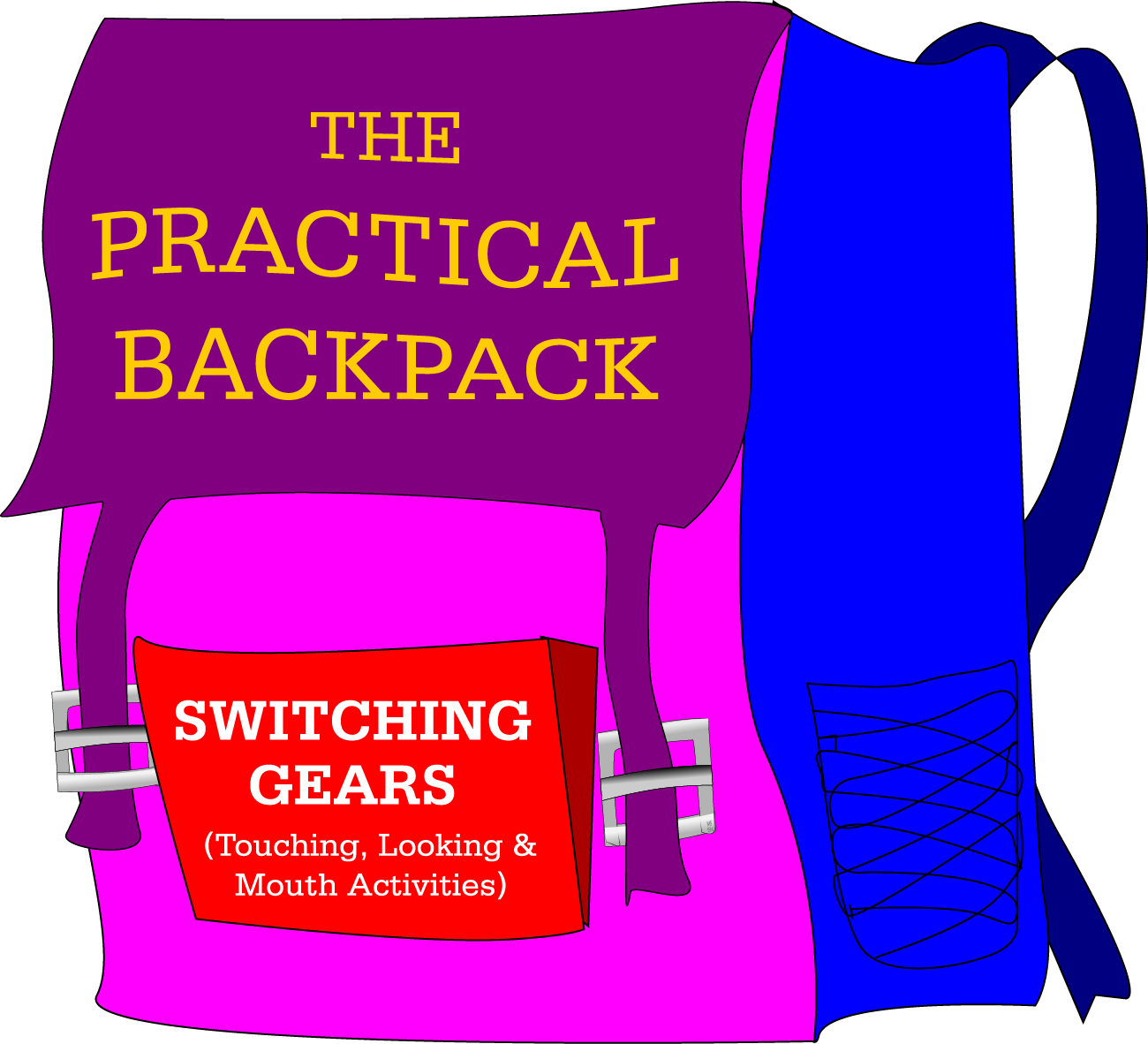Blog
Ideas For Visual Tactile And Proprioceptive Actiivites For The Sensory Sensative Child

THE PRACTICAL BACKPACK Strategies and tips for situations and behaviors
Touching, looking and mouth activities for changing alertness states for the sensory sensitive child
Touching activities
• Putting hands into a container of beans, rice or sand and sifting contents through fingers• Brushing a feather over your arms (light touch)
• Squeezing your arms with your hands (deep pressure)
• Taking a cool shower or putting cold water on face and/or arms
• Taking a warm shower or putting warm water on face and/or arms
• Wearing close-fitting or spandex clothing, such as bike shorts, leggings or long underwear (can be worn unobtrusively under regular clothes)
• Wrapping up in a blanket, flexible mat, body sock, material, etc.
• Laying under a weighted or heavy blanket
• Sitting and holding a lap weight
• Roll a therapy ball gently over your child’s body while s/he is lying on a mat or rug (deep pressure)
• Make vibrations on your child’s arms, hand or back
• Use two fingers on both sides of your child’s spine and give a light upward stroke 3-5 times
• Use two fingers on both sides of your child’s spine and give a firm downward stroke 3-5 times
Touching and movement combination activities
• Crawling through a short tunnel of material• Performing compression activities such as wall pushups, pushing hands together, hugging yourself
• Playing with a fidget toy or spinner
• Playing with squeezable objects (such as clay, play dough, Thera-putty, silly putty, squishy toys, beanbags, etc.)
Touching and listening combination activities
• Sitting and holding a lap weight while listening to a story or music• Laying under a weighted or heavy blanket, or being wrapped up, while listening to a story or music
Looking activities
• Watching fish swim around in a tank• Looking at a snow globe
• Watching a lava lamp, patterned screensaver, or other slow-moving object
• Sitting in a dimly lit room, preferably with sparsely-decorated walls painted in cool colors
• Turning off the lights
Looking and touching combination activities
• Performing any looking activity while sitting and holding a lap weight• Performing any looking activity while laying under a weighted or heavy blanket, or being wrapped up
• Reading or working while lying under a heavy/weighted blanket
Mouth activities
• Eating chewy foods such as fruit leather or roll-ups, dried fruit, gummy candy, bagels• Eating crunchy foods such as pretzels, carrots, apples, granola, etc.
• Sucking on a piece of fruit before eating it
• Sucking on sour candies or mints
• Eating popsicles, frozen grapes, or frozen orange sections
• Drinking grapefruit, cranberry or other tart juice, especially if is partially frozen
• Drinking through a long, thin straw
• Using short straws to eat foods such as pudding, yogurt, custard, soft ice cream, applesauce, etc.
• Drinking a thick liquid, such as a milkshake, through a straw
• Drinking through a straw or bottle with a sports cap
• Sucking on a sports type water bottle
• Chewing gum, especially strong flavors such as mint
• Chewing/sucking on special chewable jewelry, Theratubing, pencil topper chews, etc.
• Blowing up a balloon
• Blowing pinwheels
• Blowing bubbles
• Blowing cotton balls along a table to race or score goals
• Using a straw to blow cotton balls along a table to race or score goals
• Using a straw to blow bubbles in the bathwater
• Using a straw to blow ping pong balls in the bath
• Using a “blow pen” to make art
• Blowing a whistle
• Blowing a harmonica
• Playing a wind instrument
Note: Again, please don’t limit yourself to these lists; use them as a springboard for you and your family to develop activities that work best for you and your sensory sensitive child.
Looking ahead:
I’ll be suggesting ideas and tips for more situations in upcoming Practical Backpack posts, interspersed among other in-depth posts about sensory issues. In the next post, we will begin discussing in detail what a sensory diet is, and how it can help keep daily life running smoothly.Have you encountered any challenges for which you’d like coping strategies? Please share your thoughts in the comments section below. And of course you can always let me know there or via email about any other topics you would like to discuss or hear more about.
Feel free to share or quote from this blog (with attribution, please, and if possible, a link), and to repost on social media.
I look forward to hearing from you!
All the best,
Miriam
